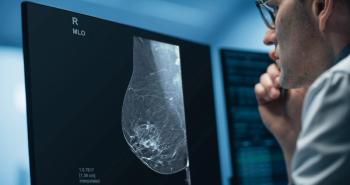
Shaping the future with healthcare IT
Statistics can be remarkable things. They can identify the benefit of current actions or point to new paths for the future. The statistics released last week by researchers at Memorial Sloan-Kettering Cancer Center in New York exemplify the former. Statistics that could be garnered from the use of healthcare IT exemplify the latter.
Statistics can be remarkable things. They can identify the benefit of current actions or point to new paths for the future. The statistics released last week by researchers at Memorial Sloan-Kettering Cancer Center in New York exemplify the former. Statistics that could be garnered from the use of healthcare IT exemplify the latter.
The trigger for these possibilities was last week's announcement that the size of newly diagnosed breast tumors decreased significantly from 1975 through 1999. This finding was the result of analyses based on data gathered by the Surveillance, Epidemiology and End Results (SEER) program of the National Cancer Institute, an authoritative source of information on cancer incidence and survival in the U.S. since 1971.
When the New York researchers compared five-year cancer survival rates in women diagnosed from 1995 to 1999 with those of women diagnosed from 1975 to 1979, they found 61% of the increase in survival could be attributed to the discovery of smaller tumors.
I doubt it is coincidental that the most dramatic change in the identification of small breast tumors occurred from 1995 to 1999, the period immediately following the October 1994 implementation of the Mammography Quality Standards Act of 1992. The act imposed criteria designed to strengthen the quality of mammography, requiring certification and annual inspections of mammography facilities to ensure compliance. It forced some facilities to close but also led to a miniboom in the acquisition of modern mammography equipment, whose use enhanced the quality of medical practice.
Quality of service has long been an issue in the radiology community, which for decades has bemoaned the dispersion of imaging technology to nonradiological quarters, citing increased costs and poorer quality. Much of this has been anecdotal and, consequently, debatable on the grounds that the data were applied to support political aims of radiologists. Now, however, the means for dispelling such counterclaims and determining what constitutes state-of-the-art care may be at hand.
Healthcare IT systems are being widely adopted. Politicians and federal bureaucrats are calling for their use to enhance productivity and reduce medical errors. What better time to formulate tightly focused studies aimed at determining how the best specific diagnostic results are found?
Such projects could build on the methodology applied to the SEER data. But rather than simply linking a diagnostic result, such as smaller tumor size, to better outcomes, these studies could identify the facilities, specialists, and technologies that deliver improved outcomes.
If implemented in this way, they could be the ultimate expression of the benefit to be derived from healthcare IT, as they would have the potential to guide all of medical practice.
Newsletter
Stay at the forefront of radiology with the Diagnostic Imaging newsletter, delivering the latest news, clinical insights, and imaging advancements for today’s radiologists.




























